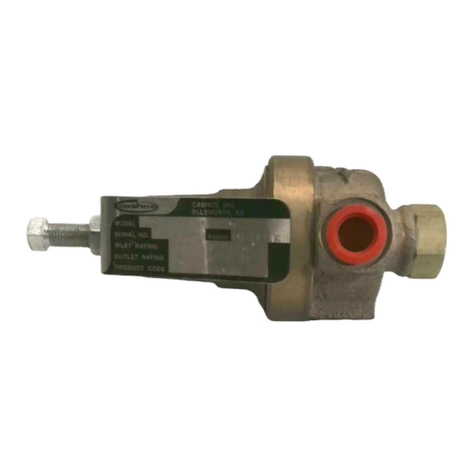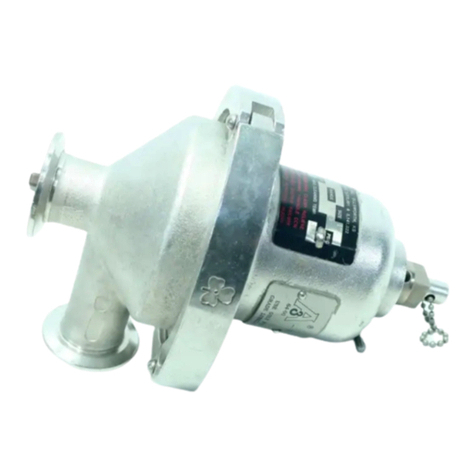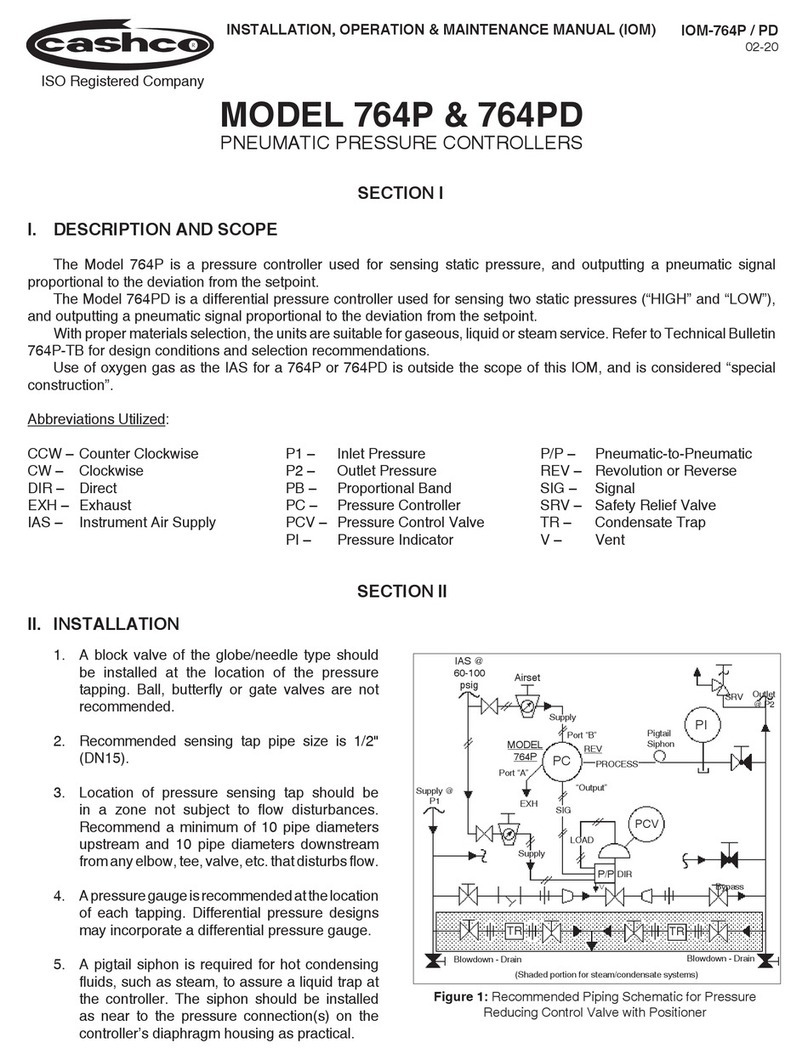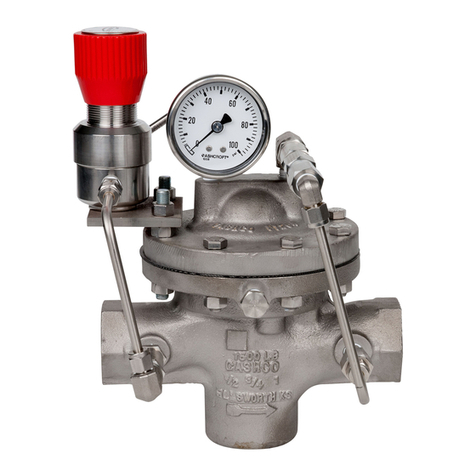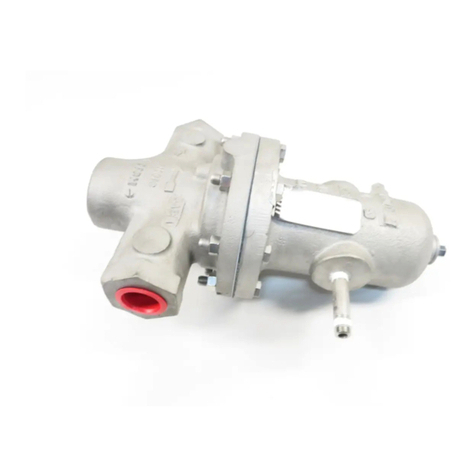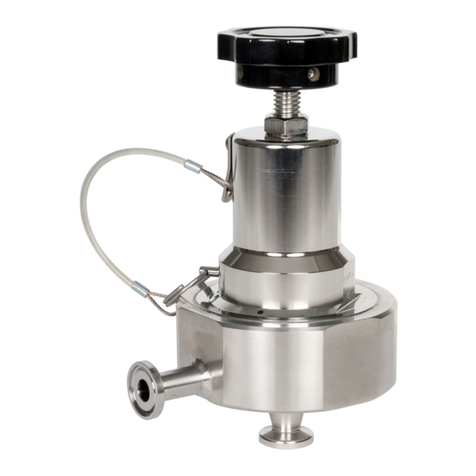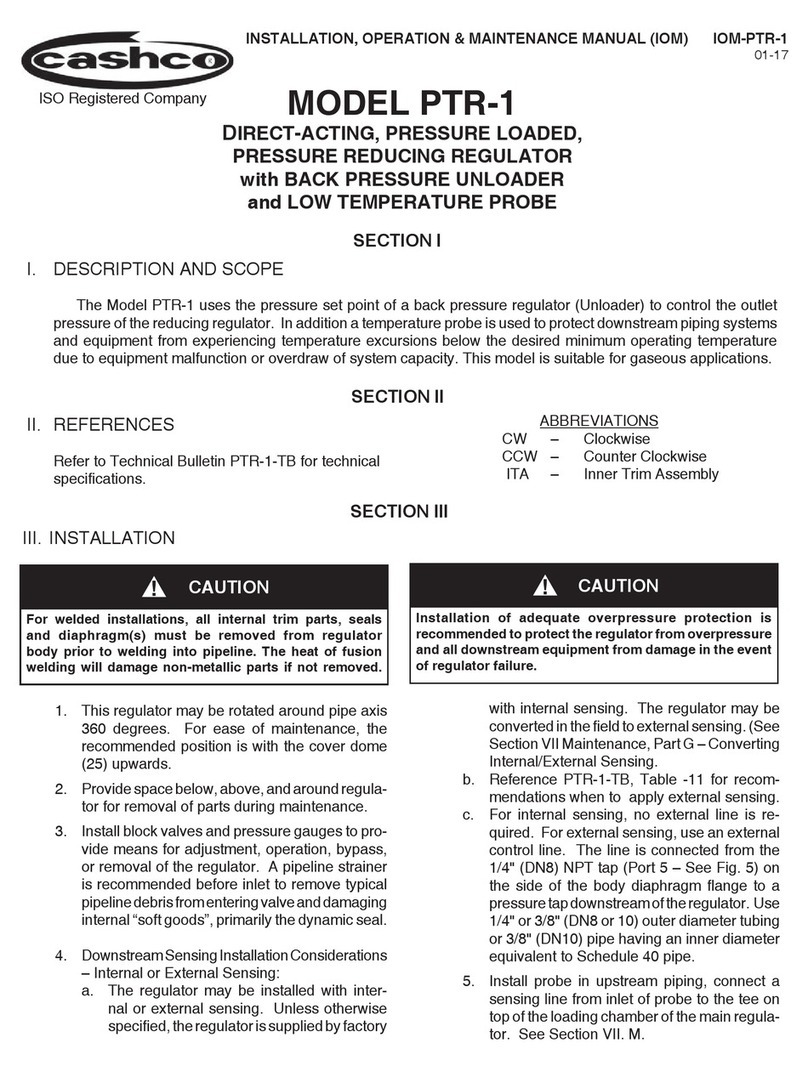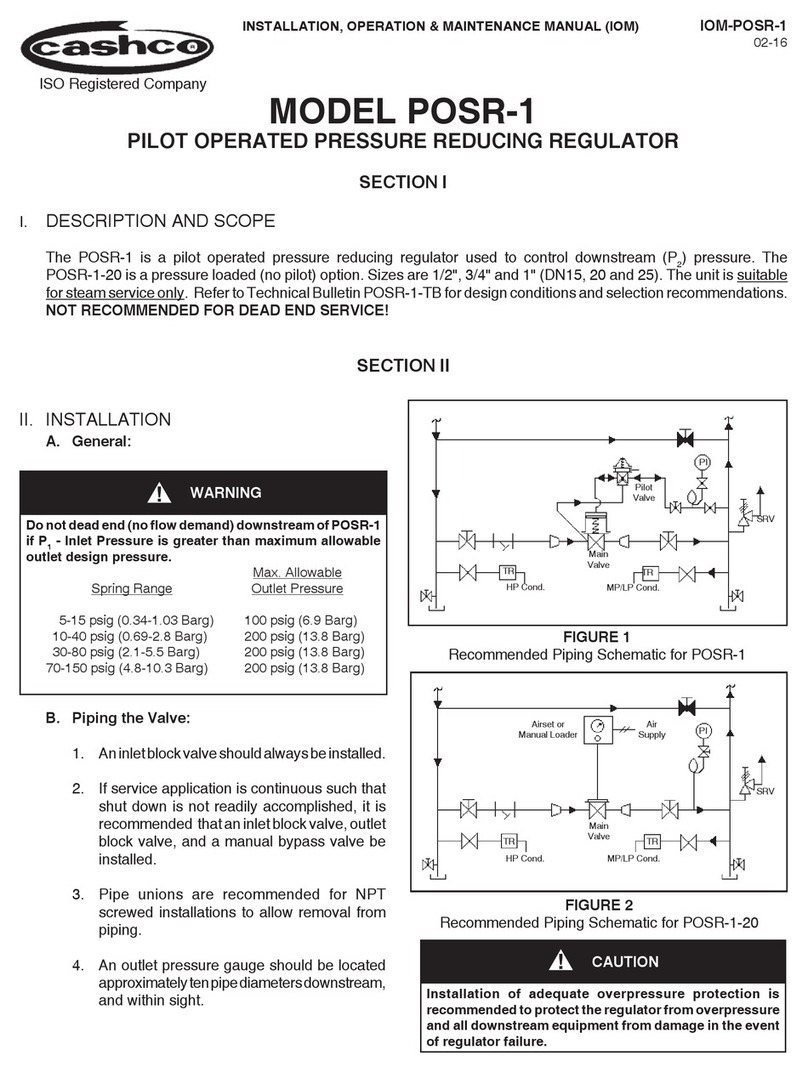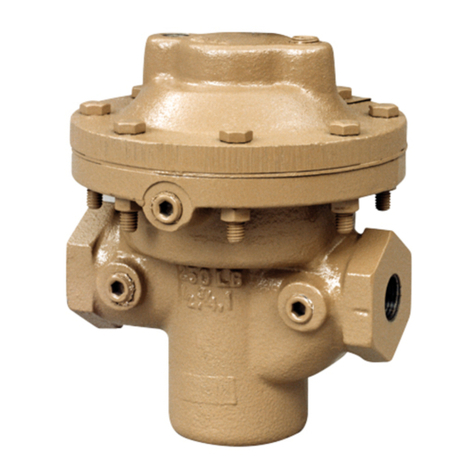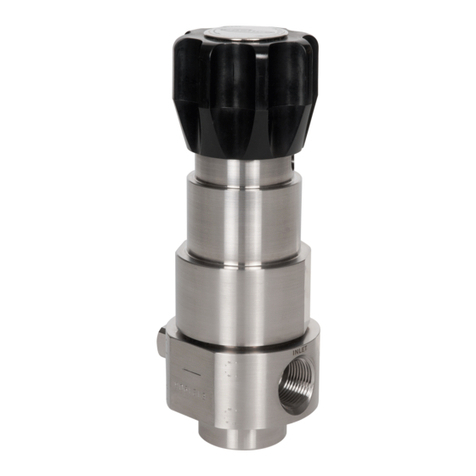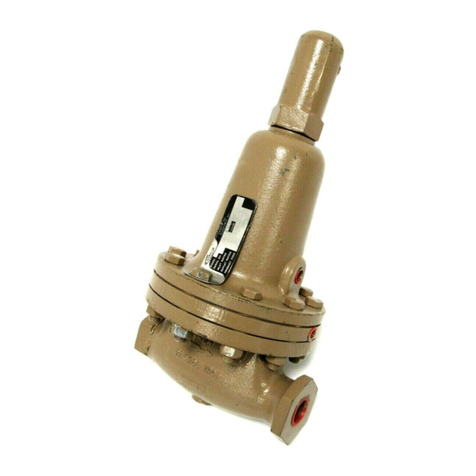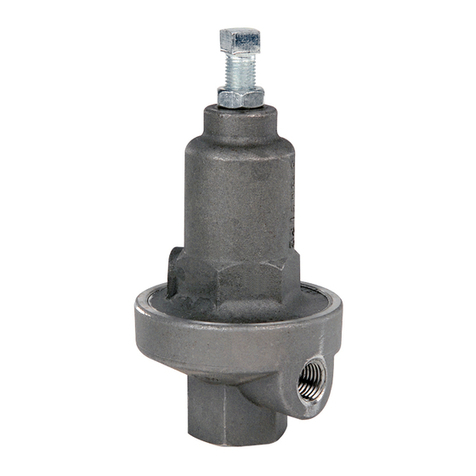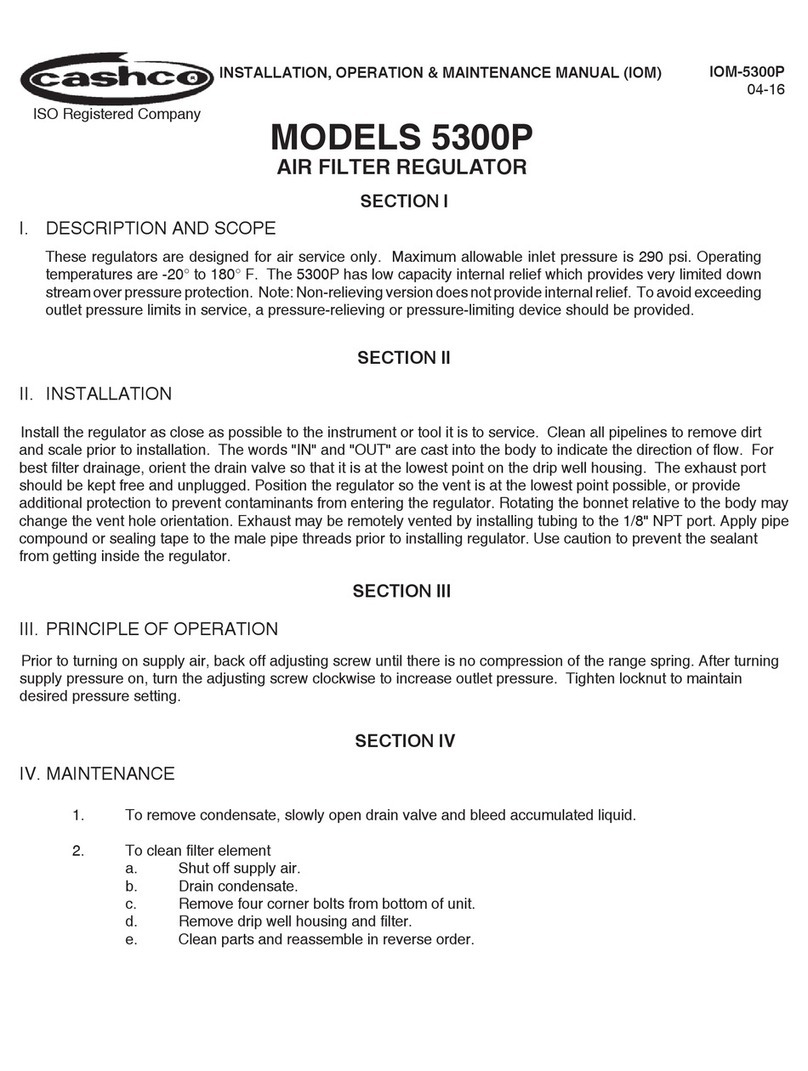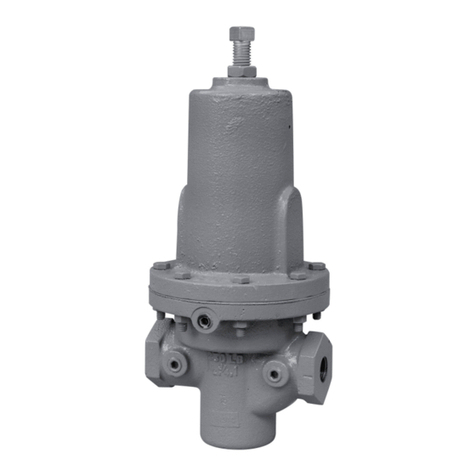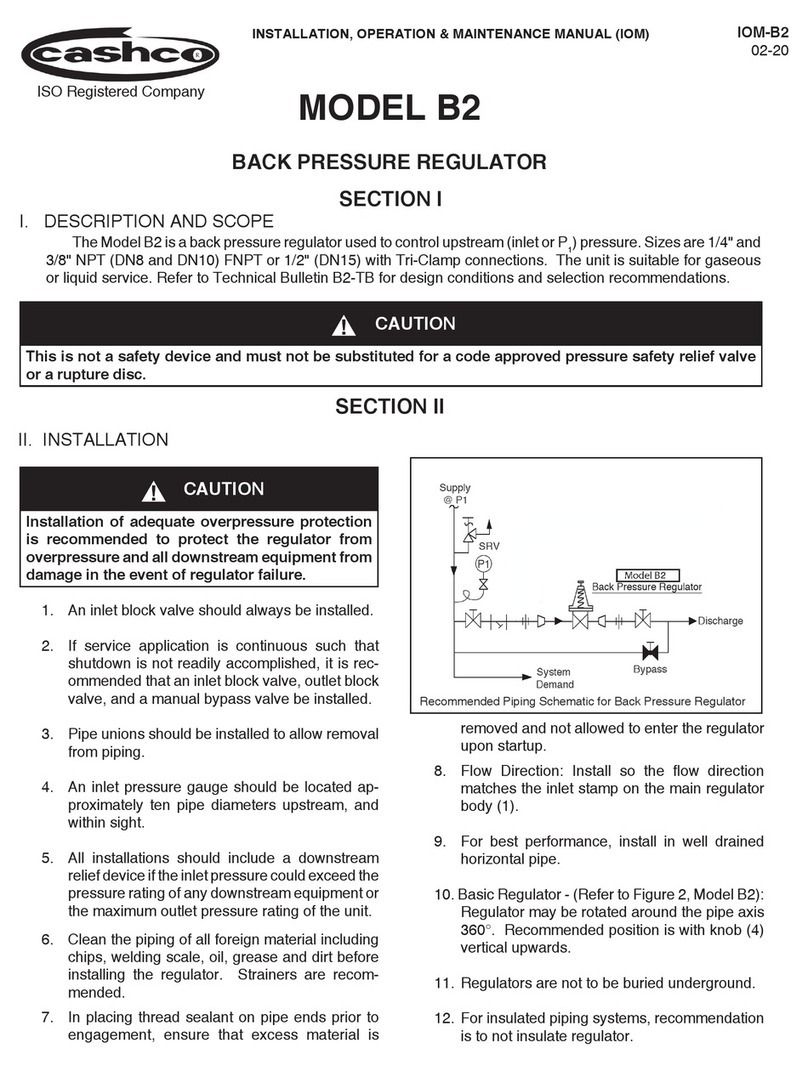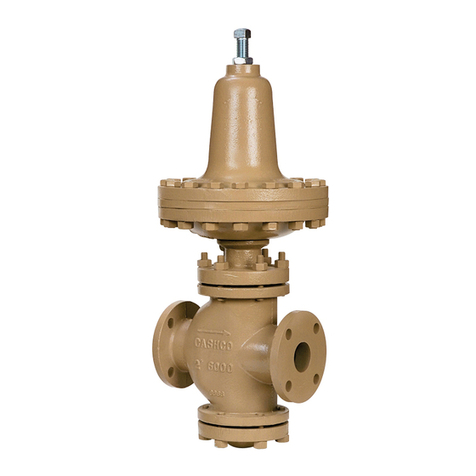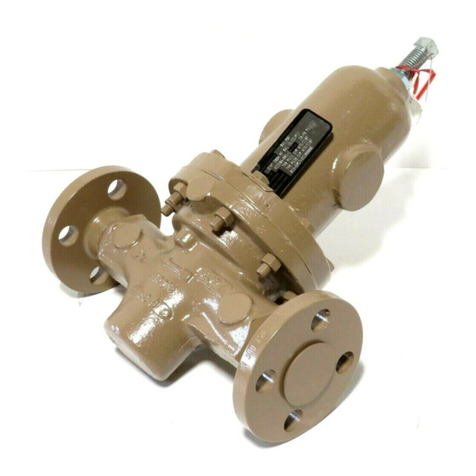
4 IOM-1171/2171
10. Reassemble diaphragm subassembly by
placing piston O-ring (13), diaphragm(s)
(10), pressure plate (3) and lock washer (6)
over threaded post of piston(12). Assure the
pressure plate (3) is placed with curved outer
rim down next to the diaphragm (10) surface.
Place a thread sealant compound similar to
Loctite #271 on the threads of the piston's
post (12) prior to tightening the pressure plate
nut (7) to the following torque values:
Sizes Diaphragm Torque
ALL Metal 60 In-lbs (6.8 N-m)
Composition 15 In-lbs (1.7 N-m)
11. Formetaldiaphragm(s)(10),placediaphragm
gasket (11) into body (1) recess (none
required for composition diaphragm). Set
diaphragm subassembly into the body.
12. Place the range spring (16) over the pressure
plate nut (7) of the diaphragm subassembly.
13. Place multipurpose, high temperature
grease into depression of spring button (4)
where adjusting screw bears. Set spring
button (4) onto range spring (16); assure
spring button is laying flat on spring.
14. Rotate the spring chamber (2) CW by hand
into the threaded portion of the body (1)
assuring not to cross thread. NOTES: Inspect
and clean threads prior to reassembly. For
the Model 2171 apply an appropriate thread
lubricant to the spring chamber (2) threads
prior to reassembly to prevent seizing
together with body (1). Continue hand
rotating CW until firmly seated against the
upper diaphragm gasket (11). Tighten the
spring chamber (2) and body (1) connection
to the following torque value: All sizes - 30-35
Ft. lbs (41-47 Nm).
15. Reinstall adjusting screw (5) with locknut (8)
into the spring chamber (2).
16. Pressurize body with air and spray liquid leak
detector around body (1) and spring chamber
(2) to test for leakage. Ensure that an inlet
pressure is maintained during this leak test
of at least mid-range spring level; i.e. 20-80
psig (1.4-5.5 Barg) range spring, 50 psig (3.4
Barg) test pressure minimum.
C. Diaphragm Replacement - Model 2171:
1. Procedures are the same as Model 1171.
2. For SST body (1) and SST spring chamber
(2), use thread lubricant to minimize potential
of seizing threads.
D. Special Instructions for Diaphragm Removal:
1. If the TFE coated diaphragm is utilized on the
Model 2171, the TFE coating is the wetted
side of the diaphragm.
2. If the Option -2 handwheel is utilized, the
adjusting screw (5) and locknut (8) are re-
placed with a handwheel (17) and lock nut
(8). With the Option-22 panel mounting w/
handwheel, the adjusting screw and lock nut
are replaced with a handwheel (17), lock nut
(8) and a panel mounting nut (18).
3. Use only those gaskets manufactured and
supplied by Cashco, Inc.
E. Piston / Seat Replacement:
1. Trim removal requires that diaphragm
subassembly be removed and disassembled.
Refer to previous procedure, Section VI.B.
2. Inspect inside surface of cylinder wall inside
the body. (NOTE: The cylinder is an integral
part of the body. Replace the regulator should
any damage be noted on the cylinder or seat
surfaces). If there are no signs of erosion/
wear on seating surfaces, piston (12) alone
may be replaced.
If composition seat (14) is damaged or worn,
rotate the set screws (15) CCW to remove.
Grasp the seat and pull it out of the piston(12).
Insert new seat into the end of the piston and
install set screws to hold the seat in place.
3. Clean body (1) cavity. Clean all parts to be
reused. NOTE: On regulators originally
supplied as “oxygen clean”, Option's 1171-
5-55, 2171-36-55, maintenance must include
a level of cleanliness equal to Cashco's
cleaning standard #S-1134. Contact factory
for details.
4. Use special care cleaning the body (1) and
cylinder shoulder, as this pressurized joint is
metal-to-metal with no gasket.
5. Reinstall diaphragm subassembly per
Section VI.B., Diaphragm Replacement.
6. Bench test unit for suitable operation. NOTE:
Regulators are not tight shut off devices.
Even if pressure falls below setpoint, a
regulator may or may not develop bubble
tight shut off. In general, tighter shut off can
be expected with composition seat.
7. Spray liquid leak detector to test for leakage
around body (1) and spring chamber (2). Test
pressure should be the maximum allowed by
the range spring (16) at the inlet.

